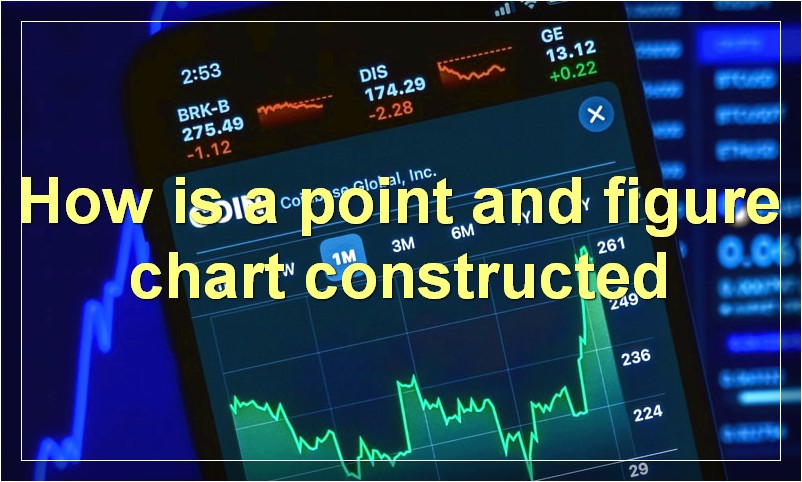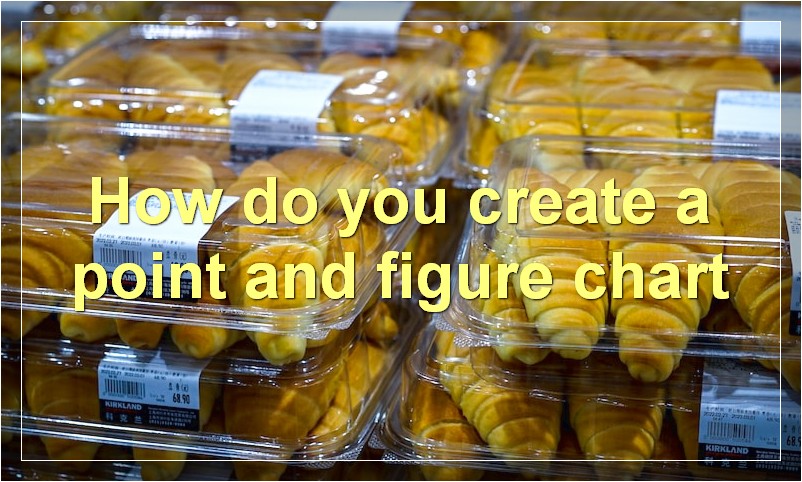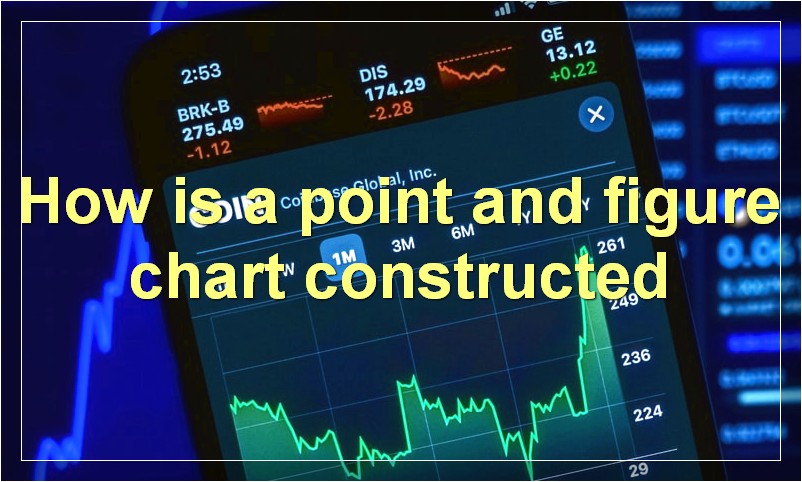Point and figure charts are a powerful tool that every trader needs to know about.
What is a point and figure chart
A point and figure chart is a type of chart used by technical analysts to predict future price movements of a security. This chart looks at past price movements and uses them to predict future prices. The chart is made up of a series of columns, with each column representing a certain period of time. The first column is the most recent period, and the last column is the earliest period. Each column contains a certain number of points, which represent the price changes during that period. The number of points in each column depends on the time frame that the analyst is using.
How is a point and figure chart used

In technical analysis, a point and figure chart (P&F) is a chart that displays price movements in an easy-to-understand format. P&F charts are used to identify potential reversals in the market trend.
P&F charts are different from other types of charts, such as bar charts and candlestick charts, because they only take into account price changes that are above or below a certain level. This level is known as the box size. For example, if the box size is $1, then a price move from $10 to $11 would be considered one point. A move from $10 to $9 would not be counted.
P&F charts are created by plotting a series of Xs and Os on a grid. An X is plotted when the price moves up by one box size, and an O is plotted when the price moves down by one box size. As the price continues to move in the same direction, more Xs or Os are added to the chart.
When the price reverses direction and moves back by one box size, this is called a reversal. A reversal is marked with a small horizontal line on the chart. For example, if the price moves from $10 to $11 (one box size up), then back down to $10 (one box size down), this would be considered a reversal.
P&F charts can be used to identify potential support and resistance levels, as well as trends in the market.
What are the benefits of using a point and figure chart
There are several benefits of using a point and figure chart when analyzing stocks. First, this type of chart is easy to construct and interpret. Second, point and figure charts can be used to identify key support and resistance levels. These levels can be used to help make trading decisions. Finally, point and figure charts can be used to monitor the strength of a trend. If the trend is weakening, it may be time to exit the trade.
How does a point and figure chart differ from other types of charts
Point and figure charts are a type of chart used in technical analysis that displays price movements in a way that is easy to interpret. Unlike other types of charts, point and figure charts do not use time as the axis. Instead, they use a scale of prices. This makes it easy to identify price patterns and trends.
What are the disadvantages of using a point and figure chart
There are a few disadvantages of using point and figure charts that investors should be aware of before using this type of chart. One disadvantage is that these charts can be less effective in volatile markets as the price movements can be more erratic. This can make it difficult to identify patterns and trends. Another downside is that point and figure charts only take into account price movements and do not consider other important factors such as volume or open interest. This means that they may not provide as complete a picture as other types of charts.
How do you create a point and figure chart

Point and figure charting is a technique used by some technical analysts to predict future price movements. These charts are created by plotting a series of Xs and Os on a graph. The Xs represent rising prices, while the Os represent falling prices. The number of Xs or Os in a column represents the price movement for that particular time period.
Some analysts believe that point and figure charting is more effective than other types of technical analysis, as it can filter out small price movements and focus on the larger picture. This can be helpful in identifying trends and making predictions about future price movements.
If you’re interested in learning how to create point and figure charts, there are a few things you need to know. First, you need to have a data set that contains historical price information. This data can be obtained from a financial website or broker. Once you have this data, you can use a point and figure charting software program to create your chart.
There are a few different ways to create point and figure charts. The most common method is known as the three-box reversal method. With this method, you start by finding the highest high and the lowest low for the given time period. You then plot a line connecting these two points.
Next, you identify the next highest high and lowest low. If the new high is higher than the previous high, you plot an X above the line. If the new low is lower than the previous low, you plot an O below the line. You continue this process until you have enough data points to form a meaningful pattern.
Once you’ve created your point and figure chart, you can start looking for patterns that may predict future price movements. These patterns can take some time to learn, but they can be incredibly useful in making investment decisions.
What software programs can be used to create a point and figure chart
There are a few different software programs that can be used to create a point and figure chart. Some of the more popular ones include Microsoft Excel, Quicken, and MetaStock.
Point and figure charts are a type of charting that is used by traders to track price movements. They are easy to read and can give traders a good idea of where the market is headed.
Creating a point and figure chart is not difficult. The first step is to find a software program that has the ability to create them. Once you have found a program, simply input the data that you want to use into the program.
Once the data is entered, the program will generate the point and figure chart. This chart can then be saved and used for future reference.
Are there any special considerations that need to be made when creating a point and figure chart
When creating a point and figure chart, there are a few special considerations that need to be made. First, you need to make sure that you have enough data points to create a meaningful chart. Too few data points will make the chart less reliable and accurate. Second, you need to choose the right scale for your chart. The scale should be based on the price movements of the security being charted. A too small scale will make it difficult to see the overall trends, while a too large scale will make the chart less useful for making predictions. Finally, you need to be aware of the different types of patterns that can form on a point and figure chart. These patterns can be used to predict future price movements.
How do you interpret a point and figure chart
A point and figure chart is a graphical representation of price movements in the stock market. It is used by traders to predict future price movements and to make trading decisions.
The chart consists of a series of X’s and O’s that represent rising and falling prices. The X’s represent rising prices, and the O’s represent falling prices. The chart is read from left to right, and each column represents one day of trading.
Traders use point and figure charts to identify trends and support and resistance levels. They also use them to set stop-loss orders and to make buy and sell decisions.
What are some common mistakes made when using a point and figure chart
There are a few common mistakes that are made when using point and figure charts. One mistake is not starting the chart at the right price. Another mistake is not using the right time frame. The last common mistake is not including all of the relevant data.

